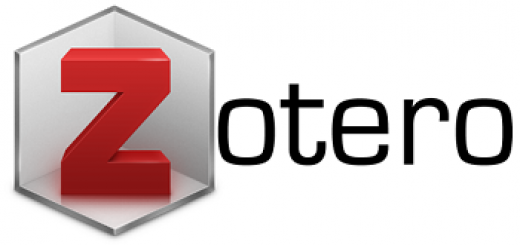Hexacopter Drones for Fertilizer Sowing in the Agricultural Sector Using the Global Positioning System (GPS)
Abstract
Indonesian agricultural products are one of the highest-yielding agricultural commodities on the Asian continent. Farmers are still reliant on a manual method to agricultural land care and management, one of which is the application of fertilizer to agricultural land. As a result, with the help of an unmanned aerial vehicle (UAV) or a robot flying drone, a system or fertilizer sowing equipment is utilized on plants. The results of this study led to the creation of a hexacopter drone equipped with fertilizer-based sensors and GPS. Hexacopter refers to a quadcopter having only four rotors. Drone rides are paired with tank-shaped sower actuators and fertilizer spraying as a container and fertilizer sowing method. Using GPS sensor block m8n, which serves as a satellite signal receiver and is converted to a position point in the form of longitude and latitude values, the vehicle can travel to fertilize by following the route of the coordinate point that has been identified in the agricultural land region. The Pixhawk 2.4.8 flight control system, which uses automatic or autonomous controls, can run smoothly, allowing the ride to automatically seed the track. The Lippo 2300mAh 4s battery has a maximum ride load lifting capability of 500 grams of fertilizer and a fertilizing height of three meters.
References
R. R. Tjandrawinata, “Industri 4.0: revolusi industri abad ini dan pengaruhnya pada bidang kesehatan dan bioteknologi,” Work. Pap. from Dexa Medica Gr. 2, 2016, doi: 10.5281/zenodo.49404.
F. R. Tarigan, “Rancang Bangun Robot Obstacle Menggunakan Sensor Sharp GP2Y0A21 IR Berbasis Arduiono Uno,” Universitas Pembangunan Panca Budi, 2019.
H. Khoirunisa and F. Kurniawati, “Penggunaan Drone dalam Mengaplikasikan Pestisida di Daerah Sungai Besar , Malaysia,” J. Pus. Inf. Masy., vol. 1, no. 1, pp. 87–91, 2019.
S. K. Indrawan, F. Hadary, and A. Hartoyo, “Rancang Bangun Robot Terbang Penghindar Halangan Dalam Ruangan Bersekat,” Elkha, vol. 10, no. 2, pp. 82–87, 2018, doi: 10.26418/elkha.v10i2.27870.
N. Ikhwana and D. R. Hapsari, “Aplikasi Drone Wawasan Tani untuk Pertanian di Simpang Lima , Sungai Besar , Selangor,” J. Pus. Inov. Masy., vol. 1, no. 1, pp. 99–104, 2019.
K. Rahman, E. Novitasari, and N. Letari, “Uji Efisiensi Lapang Unmanned Aerial Vehicle (UAV) Berbasis Quadcopter Kapasitas 10 Liter dalam Pemupukan Tanaman Padi,” J. Pendidik. Teknol. Pertan., vol. 7, no. 2, pp. 257–264, 2021.
Adisel, Transformasi Masyarakat Petani dari Tradisional ke Modern. Bogor: IPB Press, 2019.
D. W. Santoso and K. Hariyanto, “Pengembangan Sistem Penyemprotan pada Platform Pesawat Tanpa Awak Berbasis Quadcopter untuk Membantu Petani Mengurangi Biaya Pertanian dalam Mendorong Konsep Pertanian Pintar (Smart Farming),” J. Ilm. Bid. Teknol., vol. 9, no. 2, pp. 49–56, 2017.
M. G. A. Pradana, “Single Propeller Drone (Singrone): Inovasi Rancang Bangun Drone Single Propeller Sebagai Wahana Pemetaan Lahan Berbasis Unmaned Aerial Vehicle (Uav),” Elinvo (Electronics, Informatics, Vocat. Educ., vol. 1, no. 3, pp. 157–162, 2016, doi: 10.21831/elinvo.v1i3.12822.
Copyright Notice
The Authors submitting a manuscript do so on the understanding that if accepted for publication, copyright of the article shall be assigned to journal IJETS, University Of Technology Yogyakarta as publisher of the journal, and the author also holds the copyright without restriction.
Copyright encompasses exclusive rights to reproduce and deliver the article in all form and media, including reprints, photographs, microfilms and any other similar reproductions, as well as translations. The reproduction of any part of this journal, its storage in databases and its transmission by any form or media, such as electronic, electrostatic and mechanical copies, photocopies, recordings, magnetic media, etc. , are allowed with a written permission from journal IJETS, University Of Technology Yogyakarta.
Jurnal IJETS Board, University Of Technology Yogyakarta, the Editors and the Advisory International Editorial Board make every effort to ensure that no wrong or misleading data, opinions or statements be published in the journal. In any way, the contents of the articles and advertisements published in the journal IJETS, University Of Technology Yogyakarta are sole and exclusive responsibility of their respective authors and advertisers.













 This work is licensed under a Creative Commons Attribution-ShareAlike 4.0
This work is licensed under a Creative Commons Attribution-ShareAlike 4.0